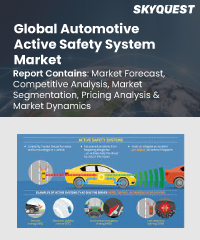
Report ID: SQMIG25A2180

Report ID:
SQMIG25A2180 |
Region:
Global |
Published Date: October, 2024
Pages:
223
|
Tables:
171 |
Figures:
79
Drivers
Strict Government Regulations and Safety Standards
Technological Advancement and Innovation in Automotive Safety Systems
Restraints
High Cost of Implementation
Challenge of Technology Integration
Our industry expert will work with you to provide you with customized data in a short amount of time.
REQUEST FREE CUSTOMIZATIONWant to customize this report? This report can be personalized according to your needs. Our analysts and industry experts will work directly with you to understand your requirements and provide you with customized data in a short amount of time. We offer $1000 worth of FREE customization at the time of purchase.

Report ID: SQMIG25A2180